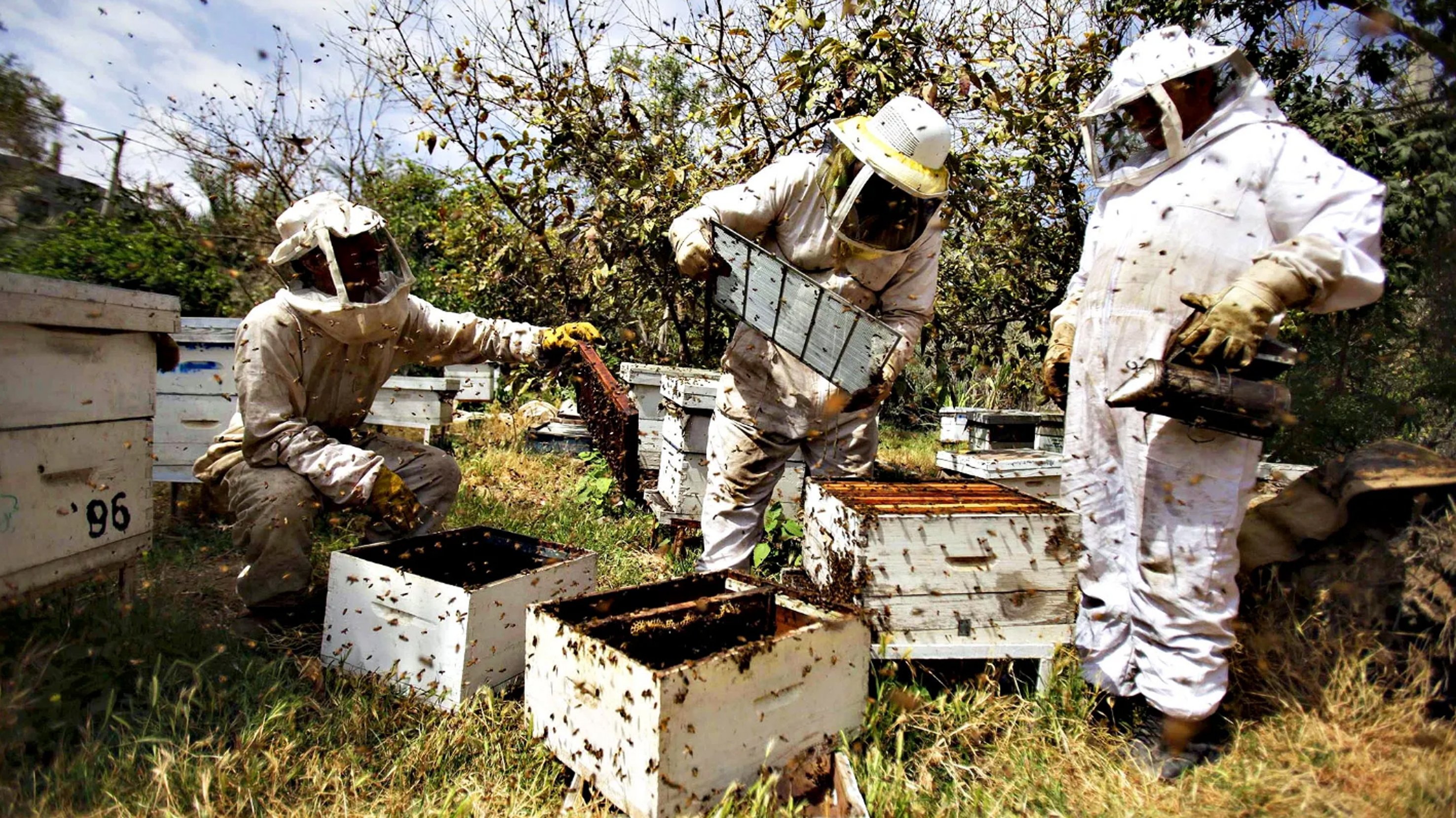Prime
Basic tips for practicing apiary

A beekeeper inspects his beehive. Photo/file
What you need to know:
- Pollen and nectar are available only during certain periods. When an additional food source is available, it is called the honey flow season. On the contrary, there will be a food shortage during periods of scarcity.
Beekeeping is the care of bee colonies, usually in man-made hives. Most such bees are honeybees in the genus Apis, but others such as Melipona stingless bees are also kept.
Apiculture is a scientific method of keeping honeybees. The ‘apiculture’ comes from the Latin word ‘apis,’ which means bee. So, beekeeping is the care and management of bees for honey and wax production.
Key rules
Beekeepers who practice good hive management report higher yields each year. Their bee colonies make them of great importance to beekeeping.
Beekeepers gain value by trading and using beehive products such as honey, wax, propolis, and royal jelly.
Other beekeepers separate the bees and sell many of the package bees to other beekeepers who are starting new bee colonies. High yield production of beehive products makes your beekeeping operation profitable and worth the continuous engagement. It also enables expansion when you want, making it easy to purchase the essential beekeeping supplies. In addition, they may hire tools, equipment, or labour for the beekeeping operation.
Effective equipment
As a beekeeper, you need to procure your beekeeping equipment. And you can use this equipment to maintain the hive and harvest honey.
Bee protection equipment
• A light-coloured bee suit that does not encourage bees to sting.
• A dark-coloured hat and face veil—to reduce exposure to sunlight.
• Bee smoking – blowing smoke into the hive to calm the bees so you can work on the hive.
• Bee maker and brush – To remove bees from honey during harvest.
• Protective clothing – Shoes, clothing, Bee vail, Bee suit, gloves, queen catcher, feeder.
• Other helpful but not essential devices help the bees feed and remove wax from the hive.
Safe beekeeping tips
There are many risks involved in beekeeping. You must make sure that your bees are safe.
It includes safety for your bee colonies, neighbours, and animals. Properly managed beehives are safe for bees and provide the best conditions for bees to thrive.
They can optimise the microclimate of the hive for optimal colony production and continuity.
Bees in such a hive can go out and forage without danger to people and animals. You are also comfortable working with hives in a beekeeping operation because you know you are safe.
Choosing a good apiary site
• The apiary ground should be clean and free of dry leaves etc., to avoid fire during summer.
• The apiary site should be located away from power stations, highways, and train tracks.
• The site should be in an open and shaded dry place.
• The site should have a natural/artificial ventilation gap. The site should receive morning and afternoon sun.
• The area should be rich in bee flora.
• There should be no source of stagnation/wastewater, chemical industry/sugar mill, etc., near the apiary.
Tips for beginners
Beekeeping can be started in any season, but generally, bees are fond of warm weather. Hence, spring is considered the best season to start beekeeping because the plant’s flowering also begins during this period.
A beekeeper will need beekeeping equipment and bees to start his apiary. Buy good bees and start with a nucleus colony. In the beginning, you should start with minimal colonies; two bee colonies will be enough. After gaining experience, you can go for commercial beekeeping.
A beekeeper should inspect the bees once every 7-10 days. Don’t overcomplicate things initially; keep it as simple as possible.
Management
By pollinating trees, shrubs, and herbaceous plants, bees are important in producing food for all the other animals and birds in forest ecosystems that depend on them for edible berries, seeds, and fruits. Bees and trees belong together.
Keeping bees happy
Buying clean hives and equipment is important to prevent disease.
Cleaning your equipment regularly can prevent pests and diseases from taking over your hive. .
Like all other creatures, bees need constant access to a safe and clean water source. Place a shallow dish or birdbath that provides a safe place to land nearby.
When the temperature rises, it is important to allow air to flow to prevent your hive from overheating and melting the honey.
When monitoring your bees’ overall health and happiness, be alert, and regular hive inspections are key.
Keep an eye out for bee pests and diseases that can keep your bees from being healthy and happy.




